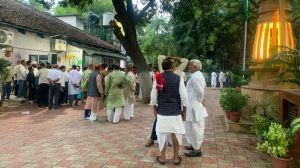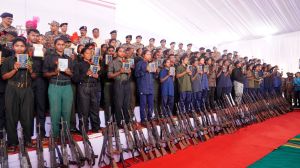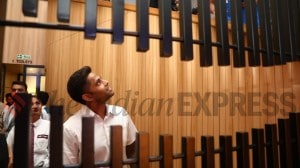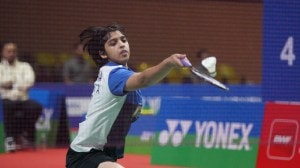West Bengal: Congress-Left tactical pact may bring third factor into play
The bitter standoff between the Mamata Banerjee government and the Narendra Modi regime has created a perception that the main battle is going to be between the Trinamool Congress and the BJP.
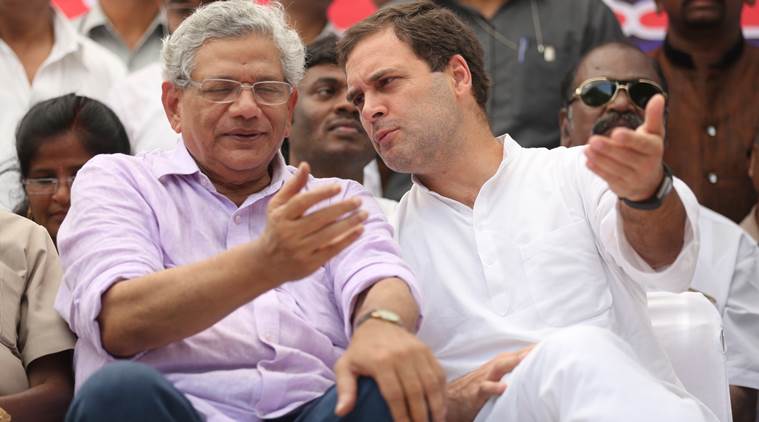 Congress president Rahul Gandhi with CPM general secretary Sitaram Yechury at Jantar Mantar. (Express File photo)
Congress president Rahul Gandhi with CPM general secretary Sitaram Yechury at Jantar Mantar. (Express File photo)
The BJP going full throttle in an attempt to make major gains, the ruling Trinamool Congress battling hard to defend its base and emerge as a kingmaker in Delhi and the Left and the Congress fighting for survival — the Lok Sabha battle in West Bengal is shaping up to be exciting like never before. At stake are 42 seats.
The bitter standoff between the Mamata Banerjee government and the Narendra Modi regime has created a perception that the main battle is going to be between the Trinamool Congress and the BJP. The Left believes the two are playing politics in tandem. Given that backdrop, a limited but tactical understanding between Left parties and the Congress could be interesting. The idea is to ensure that there is no vote division in a few seats.
A look at the voting pattern in the last Lok Sabha elections in 2014 shows that the Left could have won four more seats had the Congress not put up candidates in Alipurduar, Jalpaiguri, Krishnanagar and Birbhum constituencies. The Congress had polled more votes than the winning margin of the Trinamool candidates in these seats against the Left nominees. The BJP had then received 17.02 per cent of the votes but won only two seats.
The Left and the Congress did enter into a tactical understanding in the Assembly elections in 2016 and the result was far more encouraging. The Assembly elections saw the BJP’s voteshare coming down to 10.16 per cent. The Left’s voteshare too dipped, but the Congress’s voteshare went up to 12.25 per cent from 9.69 per cent in 2014. And it improved its seat tally too, finishing ahead of the Left.
The Left and the Congress are hoping to make incremental gains this time, eyeing a slight improvement in their respective tallies. The Congress had won four Lok Sabha seats with a voteshare of 9.69 per cent in 2014. The Left was reduced to two seats but managed to secure a voteshare of 29.95 per cent as compared to the Trinamool Congress’s 39.79 per cent.

Interestingly, in the two seats which the Left parties won last time — Raiganj and Murshidabad — it was the Congress which finished second. It would be interesting how the parties deal with these two seats this time. The CPM has made it clear that Politburo member Md Salim would contest again. He had won Raiganj by a slender margin of 1,634 votes, defeating Congress’s Deepa Dasmunsi.
A tactical understanding between the Left and the Congress, if it materialises, could see Left parties and the Congress not putting up candidates against each other in some seats and fighting against each other in many other constituencies. Given the BJP’s aggressive posturing, the Left and the Congress hope to attract “minority and anti-Trinamool” votes in seats where it would have an understanding.
On the other hand, the BJP is hoping that gains in Bengal could offset the possible losses that it could suffer in the Hindi heartland.
The Congress has indulged in all sorts of experiments in Bengal this decade. It fought in alliance with the Trinamool Congress in the 2011 Assembly elections, went solo in 2014 Lok Sabha and entered into an “unsaid” electoral understanding with Left parties in the 2016 Assembly elections.
The Congress contested in only 92 of the 294 seats in 2016, winning 44 of them with a voteshare of 40.37 per cent in seats it contested. The Left contested in 203 seats winning an overall vote share of 25.69 per cent in the seats it contested. The Trinamool Congress was way ahead with 44.91 per cent.






- 01
- 02
- 03
- 04
- 05








